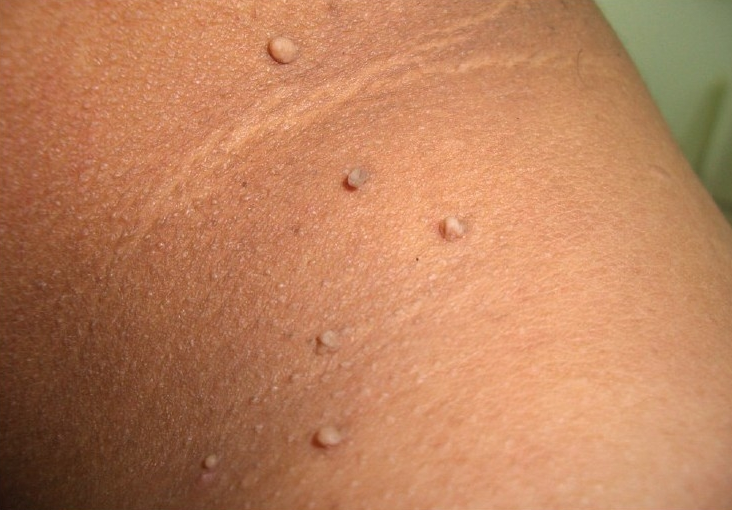Wondering what causes skin tags? They’re not as scary as you may think.
Skin tags are an unusual type of skin growth. They’re not big and noticeable like pimples (how many times have you have to cover up an angry red zit?), nor are they as worrisome as moles. So what causes skin tags? Where do they come from?
A skin tag is, essentially, a soft, small growth that hangs off your skin. They tend to be the same color of your skin, and they usually look a bit like a wart. The only difference is that there is no root of the skin tag, so they’re much easier to remove. The size can range from 2 or 3 millimeters to as big as 5 centimeters wide.
The good news is that most skin tags are harmless. They are a lot more common than you’d think—most people have skin tags and don’t even realize it, because they grow all over the body:
- Around your groin
- Under your breasts
- On your neck
- In your armpits
- On your eyelids
- Under the fold of your buttocks
Pretty weird, right?
So what causes skin tags? What’s interesting about these skin tags is that there’s no known reason why they form. Some doctors believe that a lot of friction between the skin can cause the skin tags to form. If you notice the locations where they develop, it’s usually on the body parts that get a lot of friction. Makes sense that skin on skin rubbing could contribute to the growth.
Skin tags are made up of three things: a layer of skin surrounding blood vessels and loose collagen fibers. Collagen is what gives the skin tags their uneven, lumpy shape. Blood vessels nourish the skin tag, and they’re what cause the tags to bleed when you try to remove them.

READ MORE: 5 Types of Warts You’ve Never Heard Of
Who gets skin tags? Sadly, EVERYONE does. Men and women can develop skin tags, regardless of their age—though it’s more common among older adults. People with Type 2 Diabetes or those suffering from obesity are also more prone to developing these tags. Pregnant women may be at a higher risk, thanks to the changes in their hormone levels. Increased estrogen can lead to greater cellular growth, which may manifest (among other things) as skin tags.
However, there isn’t always a reason for skin tags to develop. Skin tags may appear around your body for no reason, even on body parts that sustain very little friction. This is why doctors aren’t 100% certain why skin tags form.
Skin tags are usually painless, though they can be annoying or painful if they are in the wrong body part. For example, they can cause discomfort if they are around your groin or under your buttocks, as your clothing may rub against them as you sit, walk, or run. They can be equally irritating under your armpits or on your neck.
The good news is that skin tag removal is very easy. Skin tags are easier to remove than warts and moles, and you may not even need surgery (cosmetic) to remove them. In fact, you can deal with the skin tags from the comfort of your home.
In many cases, the skin tag will eventually fall off on its own. This is especially true if the blood supply to the skin tag is cut off (which is why using a string is such an effective removal method, especially for neck skin tags). The lack of blood will cause the skin cells to die, and the skin tag will fall off.
However, make sure to talk to your doctor before trying to remove a skin tag. They tend to bleed, and may put you at risk if you don’t know how to stanch the bleeding.
Love this article? For more beauty, style, travel, and trending topics check out The Luxury Spot on Facebook. Like us and we’ll love you back!








